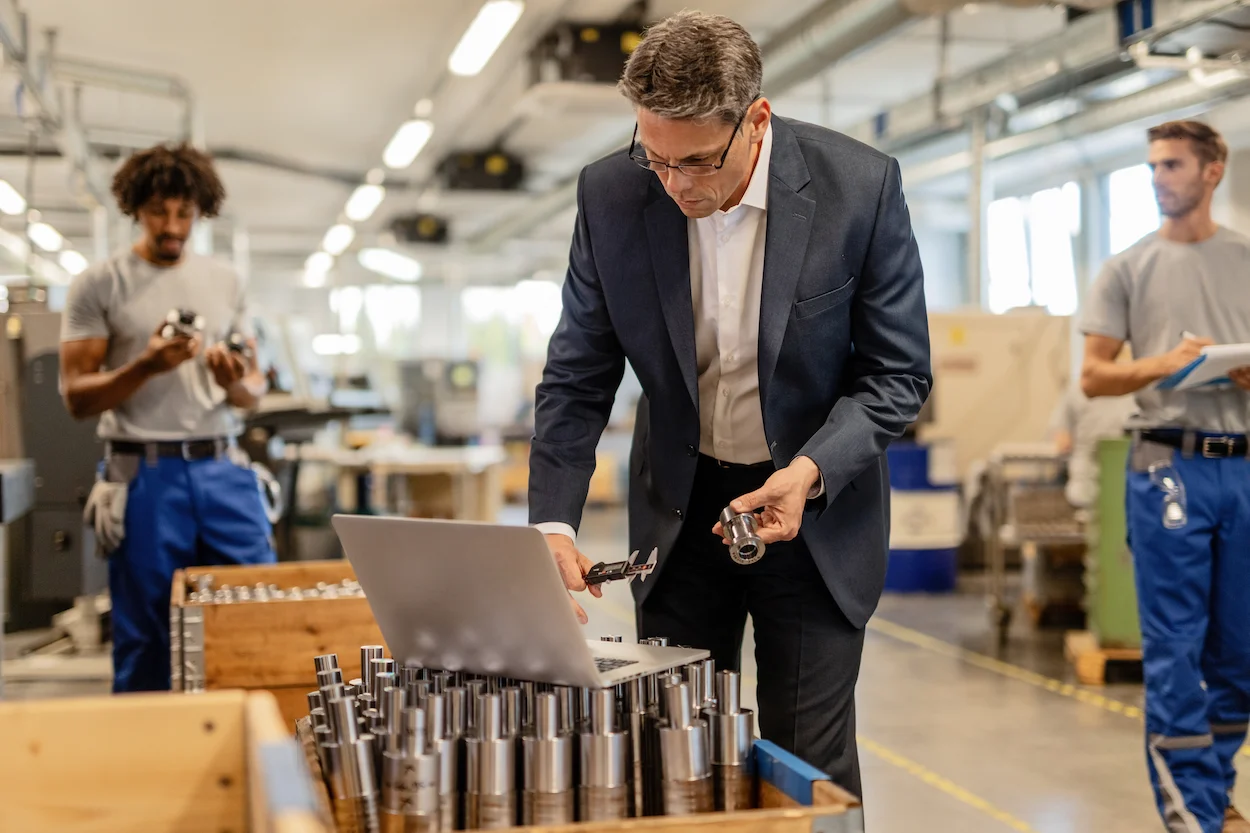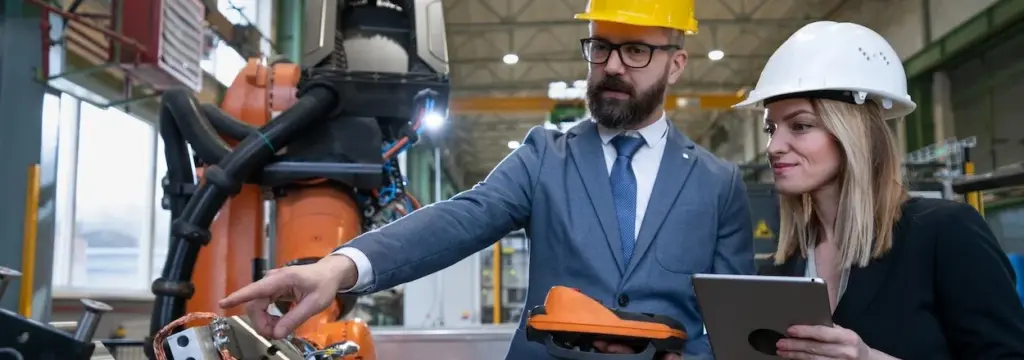Predictive maintenance with AI: the new boost for industrial planning

Predictive maintenance with AI (Artificial Intelligence) has become one of the most effective ways to improve operational efficiency and production reliability. In an increasingly digitized industrial landscape, the ability to anticipate failures before they happen is a clear competitive edge: it cuts unplanned downtime, optimizes resource use, and keeps production moving.
In recent years, applying artificial intelligence and machine learning has completely changed how companies manage their assets. It’s no longer about fixing things after they break or servicing on a fixed calendar, it’s about acting on data, patterns, and probabilities. This shift doesn’t just touch maintenance, it directly impacts production planning, capacity management, and ultimately the overall profitability of the supply chain.
From reactive to predictive maintenance: an AI-driven transformation
For decades, industrial maintenance focused on responding after failures or preventing them with scheduled routines. Those approaches fall short of today’s plant realities, where every minute of downtime translates into real money.
Predictive maintenance emerged as a natural evolution fueled by digitization and advanced analytics. With sensor-enabled equipment and large-scale data processing, companies can monitor asset health in real time and forecast when a failure is likely. In this model, artificial intelligence acts as the “brain,” spotting abnormal behavior and recommending the right intervention before a breakdown occurs.
Limits of traditional maintenance in production environments
Corrective maintenance, fixing after failure, carries steep indirect costs: lost output, planning disruption, material waste, and added stress on other equipment. Preventive maintenance, timed interventions, does lower failure risk, but it also means replacing components that still have useful life and tying up resources you may not need.
Both methods share a limitation, they rely on generic estimates instead of real asset-condition data. In complex operations where conditions constantly change, that approach is inefficient and misaligned with supply chain optimization goals.
Preventive vs. predictive maintenance: from the calendar to the data
The leap to predictive maintenance is moving from time-based logic to condition-based logic. Sensors tracking vibration, temperature, pressure, noise, or power draw capture signals that reflect actual equipment behavior. Machine-learning models process that data to detect anomalies or deviations from normal operation.
Analyzing large data volumes lets you estimate the remaining useful life of each component and pinpoint the best time to intervene. Maintenance decisions stop being calendar-driven and become evidence-based. Beyond boosting reliability, this adds major flexibility to planning, because you schedule work only when it’s truly needed.
How artificial intelligence anticipates failures and maximizes uptime
Artificial intelligence is what turns predictive maintenance into a strategic tool on the factory floor. Its ability to process massive data streams in real time, and keep learning, allows it to surface signals people would miss.
AI doesn’t just flag potential faults, it evaluates failure probability, prioritizes risks, and proposes action plans. As a result, predictive maintenance stops being an isolated technical task and becomes a lever that directly shapes operational availability, capacity planning, and overall plant efficiency.
Machine learning applied to industrial maintenance
Machine learning enables systems to learn from experience. Every failure or repair gives the model a new data point, showing which variables preceded the event and how indicators evolved. With that, the model refines future predictions and steadily improves accuracy.
Supervised and unsupervised learning, along with neural networks, uncover correlations between variables that seem unrelated. For instance, a slight rise in vibration paired with a small drop in pressure can signal a bearing failure weeks in advance. Insights like these aren’t achievable with manual inspections or periodic checks alone.
Early detection of failure patterns and remaining useful life
A major win of AI-enabled predictive maintenance is estimating a component’s remaining useful life. By analyzing sensor signals, the system builds degradation models that predict when failure probability exceeds an acceptable threshold.
Armed with that insight, you can plan replacements ahead of time, avoiding both surprise breakdowns and premature swaps. The payoff is lower maintenance cost, smarter spare-parts usage, and higher operational availability.
Automatic scheduling of interventions to cut unplanned downtime
Automation is the natural next step. AI models can not only detect failure risks but also create work orders automatically, allocate resources, and line up interventions with the production plan.
For example, if the system detects an anomaly on a hydraulic press that will require a stop within three days, the plan can be adjusted so the intervention coincides with a shift change or a lower-priority run. In this way, AI helps minimize downtime, improve Overall Equipment Effectiveness (OEE), and increase the reliability of the production schedule.

Integrating predictive maintenance with finite and infinite planning
The real value of predictive maintenance isn’t just technical accuracy, it’s integration with planning. Outputs from AI models can feed directly into finite or infinite capacity planning systems, allowing work orders and master plans to adjust automatically.
With this setup, planning moves away from static assumptions and is driven by dynamic, predictive information. That keeps production decisions aligned with actual equipment condition, reducing the risk of missed commitments and improving delivery reliability.
How AI connects maintenance with capacity planning
In finite-capacity systems, where resource constraints are modeled, predictive maintenance provides immediate visibility into asset availability. AI tells planners when a machine will need attention, so workloads can be redistributed before a stop occurs.
In infinite-capacity environments, predictive signals help tune standard times and theoretical capacities, bringing planning closer to operational reality. In both cases, the effect is the same, tighter alignment between plan and execution.
Dynamic rescheduling when faults are detected or risks arise
When a predictive system flags a potential failure, AI can trigger an automatic reschedule. That may involve reassigning tasks, resequencing production, and updating delivery estimates in real time.
This capability keeps planners working with a current scenario, avoiding bottlenecks and protecting commitments. The integration is especially valuable in industries with critical lines or highly variable demand.
Direct impact on sequencing and on-time, in-full delivery
Pairing predictive maintenance with planning intelligence directly boosts productivity. By preventing unplanned stops, you cut idle time and improve sequence efficiency. And by anticipating interventions, planners can promise dates with greater confidence, lifting OTIF (On Time In Full).
In short, AI turns planning into a living, adaptable process, where maintenance reliability converts into production reliability.

Operational and strategic benefits of predictive maintenance across the supply chain
Adopting an AI-based predictive maintenance strategy doesn’t just lift plant productivity, it creates ripple effects across the supply chain. As asset reliability rises, companies plan with more confidence, trim logistics cost, and respond faster to swings in demand.
Predictive maintenance also strengthens strategic decision-making by giving visibility into asset life cycles and site performance, helping prioritize investment and optimize resource management.
Lower costs and higher availability
Catching failures before they happen avoids emergency repairs, reduces spend on spare parts, and minimizes downtime. Better equipment availability translates into more productive capacity and higher utilization of current facilities, without expanding infrastructure.
Greater reliability in planning and OTIF delivery
Predictive maintenance stabilizes the planning system. Orders run on schedule and delivery dates are met more consistently. That reliability strengthens customer relationships and boosts competitiveness in a volatile market.
Sustainability and energy efficiency: the hidden upside of smarter maintenance
Optimized maintenance supports sustainability. Well-tuned, well-maintained equipment uses less energy, generates less waste, and lasts longer. That helps meet ESG goals and reduces the operational carbon footprint.
Artificial intelligence and predictive planning: the future of industrial operations
The convergence of predictive maintenance and planning intelligence is creating a new paradigm, predictive planning. Here, decisions are based not just on what happened, but on what is likely to happen next.
By combining AI, IoT, and advanced planning systems (APS), companies can monitor performance in real time, anticipate capacity constraints, and continuously adjust the production plan.
From historical planning to real-time predictive control
Traditional planning leans on historical data and static assumptions. Predictive planning uses real-time signals from sensors, maintenance systems, and performance metrics. Decisions become evidence-based rather than speculative, cutting uncertainty and increasing agility.
The synergy between AI, IoT, and advanced planning systems (APS)
Bringing these three together underpins the smart factory. IoT sensors capture machine data, artificial intelligence analyzes it, and the planning system uses those insights to adjust orders in real time. This creates a continuous learning loop that lifts productivity and strengthens supply chain resilience.
Use cases in manufacturing, chemicals, and food & beverage
AI-driven predictive maintenance is already mainstream across sectors. In manufacturing, it maximizes uptime on critical lines and reduces maintenance costs. In chemicals and pharmaceuticals, it improves traceability and supports compliance. In food and beverage, it helps protect quality and safety by avoiding cold-chain breaks or packaging disruptions.
Toward smarter, more resilient industrial planning
AI-enabled predictive maintenance is a real step change in operations management. It doesn’t replace planning, it makes planning better. Integrated with finite and infinite planning systems, it turns technical insight into strategic decisions, synchronizing maintenance, production, and operations.
With AI, companies can anticipate failures, reduce costs, and keep plans stable even when the unexpected happens. In a world where efficiency, agility, and sustainability are essential, predictive maintenance becomes a key lever for building a smarter, more resilient, future-ready supply chain.
At Imperia, we offer a solution that uses advanced machine learning and AI to optimize our clients’ supply chains. If you’d like to see how we can help improve your processes, book a free consultation with our experts.

Subscribe to our newsletter and transform your management!
Receive updates and valuable resources that will help you optimize your purchasing and procurement process.